Tiltmeters
Tiltmeters can monitor the stability of structural elements, deformation of walls, ceilings, and floors, and provide real-time warnings of movement. Datasheet
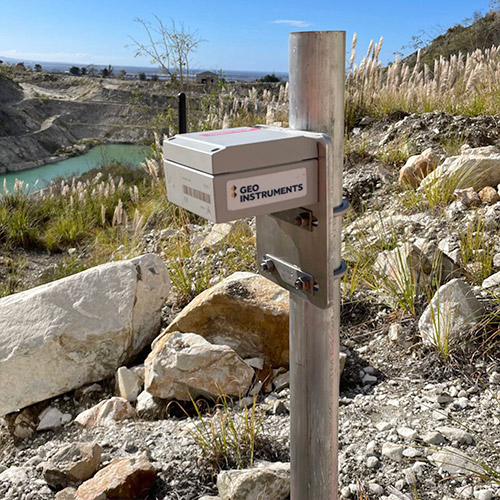
Tiltmeters mounted on stakes or poles can be used to trigger alerts when ground movements exceed alarm thresholds.
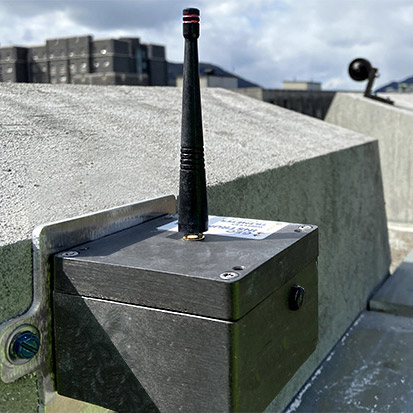
Tiltmeters mounted on structures are used to monitor stability. Mounting brackets are available for nearly every environment.
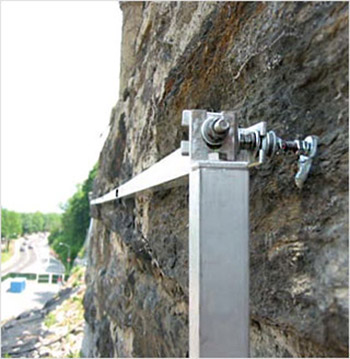
Tiltmeters mounted on arrays of vertical or horizontal beams can monitor differential settlement and deformation.
Tiltmeter Applications
Triggering Alarms
- Landslides & Rockfalls
- Embankment Failure
Monitoring Stability
- Stability of piles & shoring
- Stability of structures potentially affected by excavations or tunneling
- Stability of piers during bridge renovations
- Stability of building facades during interior renovations
Monitoring Deformation
- Effects of pressure grouting
- Differential settlement and heave
Types of Tiltmeters
Wired Tiltmeters
Wired Tiltmeters are electrolevel-based devices that are connected to a datalogger. The logger supplies powers and obtains readings. Electrolevel tiltmeters can be supplied with RS-485 interfaces when used in arrays.
Wireless Tiltmeters
Wireless Tiltmeters are MEMS-based, self-powered digital devices with built-in loggers and communications.
Wireless tiltmeters are preferred for their simplicity of operation, ease of installation, and high performance.
Laser Tilt Sensors
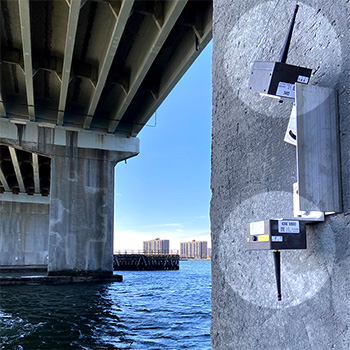
Laser-Tilts combine a laser distance meter with a tiltmeter. The laser is used to monitor displacements and the tiltmeter is verifies that the laser is mounted in a stable location.
Wireless Tiltmeters
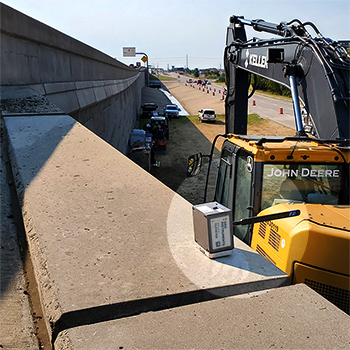
Wireless tiltmeters monitor stabililty of MSE wall during major repair work.
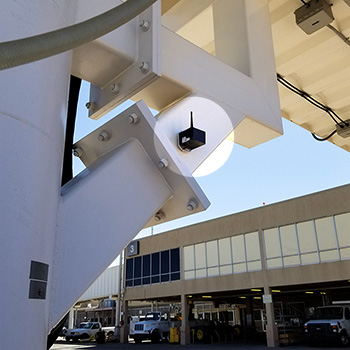
Airport jet bridge monitored by wireless tiltmeter during adjacent foundation work.
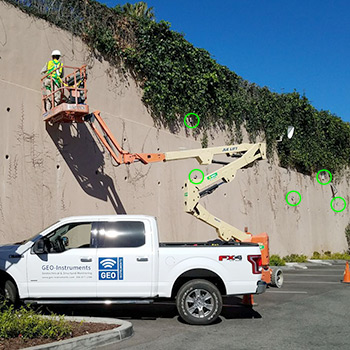
Wireless tiltmeters monitor stability of 40-foot high retaining wall above public parking lot.
Tiltmeter Specifications
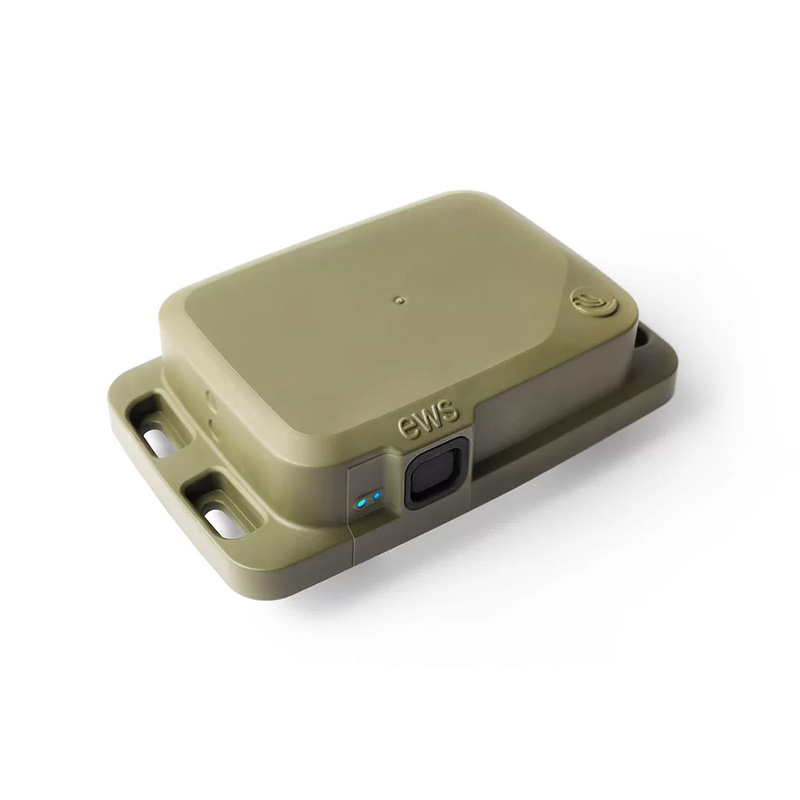
EWS Satellite Tiltmeter
Sensor: 3-axis MEMS accelerometer integrated with datalogger and wireless communications module. Installs horizontally or vertically. Reports two axes of rotation.
Range: ±5° in each axis.
Resolution 0.0001°
Repeatability ±0.0002°
Data Memory: 256,000 measurements.
Environmental: IP67, -20°C to +60°C.
Power: Internal batteries ( 2x LiSOCL2 long-life D-Cell batteries).
Communications: Transmits directly to Iridium satellites (Cellular version transmits directly to LTE-M cellular networks). Choose the satellite version for remote locations. Choose the cellular version for built up urban areas with cellular infrastructure. More about satellite communications
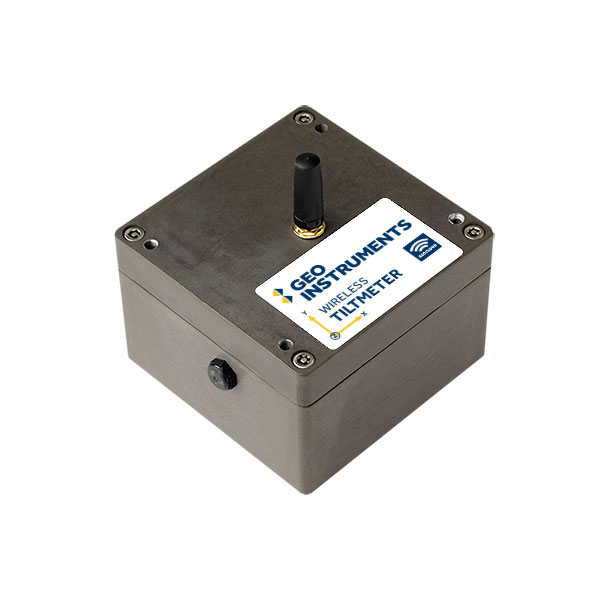
FlatMesh Wireless Tiltmeter
Sensor: 3-axis MEMS accelerometer integrated with wireless node. Reports two axes of rotation from horizontal.
Range: ±90° in each axis.
Resolution: 0.0001°.
Repeatability: ±0.0005°.
Environmental: IP68 at 1m for 24 hours, -40°C to +85°C.
Power: Internal batteries, 12 year battery life, 25 min intervals.
Communications: Transmits to Flatmesh Wireless Network
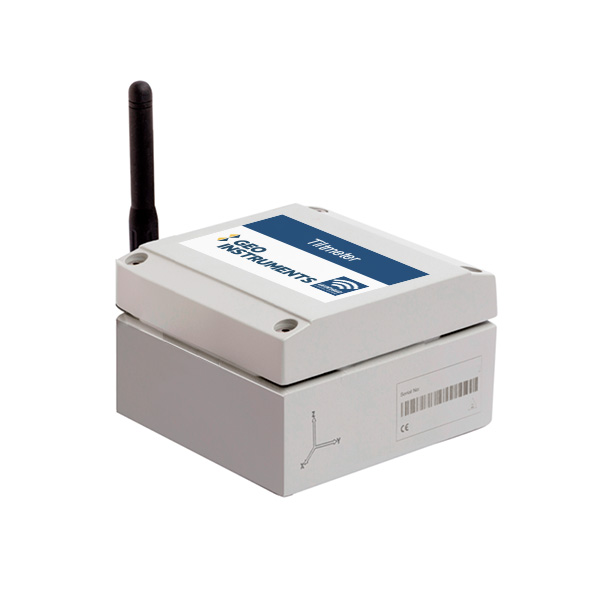
LoRa Wireless Tiltmeter
Sensor: 3-axis MEMS accelerometer integrated with wireless logger. Reports two axes of rotation from horizontal.
Range: ±90° in each axis.
Resolution: 0.0001°.
Repeatability: ±0.0003°.
Accuracy: ±0.005° @ 4° of tilt, ± 0.013° at 15° of tilt
Environmental: IP 68, -40°C to +85°C.
Data Memory: 140,000 readings
Power: Internal batteries, 3 year battery life, 5 minute intervals.
Communications: Transmits to LoRa Wireless Network
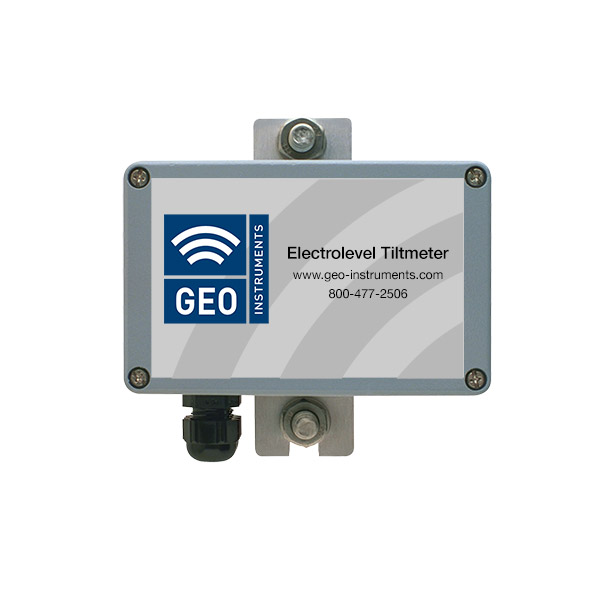
Electrolevel Tiltmeter (Wired)
Sensor: Uniaxial electrolytic sensor.
Full Range: ± 3°.
Calibrated Range: ± 0.68°.
Resolution: 0.0003°.
Accuracy: ≤1% FS calibrated range.
Temp Rating: -20 to +50 °C.
Power: Supplied by datalogger.
Communications: Cabled connection to Campbell Scientific dataloggers.
